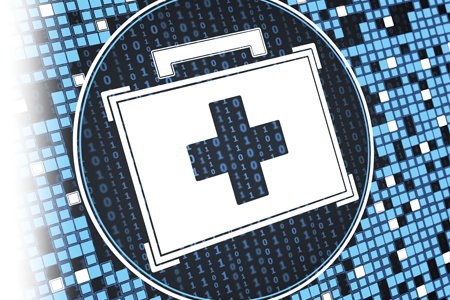

 The International Classification of Diseases 10th edition consists of two distinct codes sets: ICD-10- Clinical Modification (CM) for diagnosis codes and ICD-10-Procedure Coding System (PCS) for procedure codes. In this article, we will focus specifically on ICD-10-PCS and how its procedure codes will impact specialty-specific practices.
The International Classification of Diseases 10th edition consists of two distinct codes sets: ICD-10- Clinical Modification (CM) for diagnosis codes and ICD-10-Procedure Coding System (PCS) for procedure codes. In this article, we will focus specifically on ICD-10-PCS and how its procedure codes will impact specialty-specific practices.
Developed by the Centers for Medicare and Medicaid Services (CMS), ICD-10-PCS will be utilized by U.S. hospitals and other medical facilities for in-patient procedures and services only. Outside of the U.S., ICD-10-PCS will not be used by World Health Organization (WHO) member nations that have already implemented ICD-10-CM.
The U.S. presently employs ICD-9-CM Volume III to code in-patient procedures for electronic health records and insurance claims. Therefore, ICD-9-CM incorporates both diagnosis and procedure codes in its medical classification system. After the ICD-10 implementation deadline on October 1, 2015, insurance companies will no longer accept ICD-9-CM as a valid system for diagnosis and procedure codes, so healthcare professionals should learn ICD-10-CM and ICD-10-PCS as it applies to their medical specialty.
Physicians who utilize Current Procedural Terminology (CPT) codes to report their medical procedures and services will continue to use them. They will not be affected by ICD-10-PCS like hospitals will be in recording inpatient encounters and procedures after the ICD-10 implementation deadline. However, some physicians divide their time between private practice and hospitals where they treat inpatients. If that is the case, physicians should dedicate some time to learning ICD-10 procedure codes as well as diagnosis codes.
The granularity of ICD-10 procedure codes is far beyond the level of detail in ICD-9-CM – which had obsolete and outdated terminology, outmoded and ambiguous codes, and inadequate data that didn’t accommodate for the medical advances in the 21st century. ICD-10-PCS increased from 4,000 to 87,000 procedure codes. Further, each procedure code expanded from 3-4 digits to 7 alpha-numeric characters, and ICD-9-CM’s structural format is quite different from ICD-10-PCS.
ICD-9-CM Procedure Codes (source: CMS.gov):
- 3-4 numbers
- Each code is comprised of numbers only
- Decimal point after the second number
- Ex.
- 43.5 – Partial gastrectomy with anastomosis to esophagus; and
- 44.42 – Suture of duodenal ulcer site.
ICD-10-PCS Procedure Codes (source: CMS.gov):
- 7 characters
- Each character is alpha and numeric, although the letters O and I are omitted to prevent confusion with the numbers 0 and 1.
- No decimal
- Ex.
- 0FB03ZX – Excision of liver, percutaneous approach, diagnostic; and
- 0DQ10ZZ – Repair upper esophagus, open approach.
Here are a few other examples of differences between ICD-9 and ICD-10 procedure codes (HIM Body of Knowledge):
“Excision of malignant melanoma.”
ICD-9-CM: Excision, lesion skin 86.3 (or if radical excision is performed, 86.4)
ICD-10-PCS: Excision, right upper arm skin, external approach 0HBBXZZ
A procedure to treat excessive eye tearing due to a blocked nasolacrimal duct.
ICD-9-CM: Dacryoscystorhinostomy [DCR) 0981
ICD-10-PCS: Bypass Left Lacrimal Duct to Nasal Cavity with Nonautologous Tissue Substitute, Open Approach 081Y0K3
The much higher specificity in ICD-10-PCS will lead to several improvements in the healthcare industry. For example, these procedure codes provide a more precise representation of the patient’s medical condition and treatment, which, in turn, will reflect in more suitable reimbursement for healthcare professionals. Through the use of ICD-10, electronic health records are more exact, correct, and complete, so authoritative health organizations and professionals would be able to make informed decisions and policies based on sound and thorough research studies.
Additionally, while healthcare providers should hone their clinical documentation to match the granularity of ICD-10-CM/PCS, this updated coding system reduces the need for supporting clinical documentation in insurance claims.
HERE ARE SOME RELATED ARTICLES YOU MAY FIND INTERESTING
Regulatory & Compliance | Revenue & Finances
What Is PECOS? Step-by-Step Guidance for Specialty Practice Owners
By: Nextech | January 5th, 2026
MedSpa | Regulatory & Compliance | Aesthetics
IV Therapy Laws by State
By: Nextech | April 10th, 2025
MedSpa | Regulatory & Compliance | Aesthetics | podcast
The Current & Future State of the Medical Spa Business with Alex Thiersch
By: Tyler Terry | April 24th, 2024
